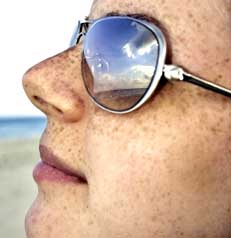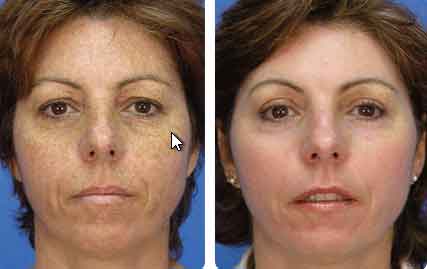 Hyperpigmentation is the darkening of an area of skin caused by increased melanin. Hyperpigmentation may be caused by sun damage, inflammation, or other skin injuries. People with darker Asian, Mediterranean or African skin tones are also more prone to hyperpigmentation, especially if they have excess sun exposure. Melasma is a form of hyperpigmentation found on some women due to changes in hormone levels.
Hyperpigmentation is the darkening of an area of skin caused by increased melanin. Hyperpigmentation may be caused by sun damage, inflammation, or other skin injuries. People with darker Asian, Mediterranean or African skin tones are also more prone to hyperpigmentation, especially if they have excess sun exposure. Melasma is a form of hyperpigmentation found on some women due to changes in hormone levels.
Sun Damage
Excessive exposure to the sun can negatively affect the skin in many ways. Sun damage causes an uneven increase in the production of melanin, which leads to the irregular coloring or pigmentation of the skin. The flat brown and black spots that occur on areas exposed to the sun are called age spots, sun spots, or even liver spots, though they have nothing to do with the liver. They are in no way related to the function of the liver, or the liver itself. Sun Damage may also present in the way of increased visible vascularity in the skin including general redness or visible small vessels causing the permanent dilation of small blood vessels, resulting in redness in the face.
Freckles
Freckles can appear at any age. Like age spots, they are triggered by the sun’s ultraviolet radiation, which leads to the increased production of melanin, the pigment that gives skin its color. Freckles commonly appear on the face, back, shoulders and arms, the areas of the body most often exposed to sunlight.
Melasma
Melasma is a tan or dark skin discoloration that primarily affects women. It is a very common skin disorder. Though it can affect anyone, young women with brownish skin tones are at greatest risk. Melasma is often associated with the female hormones estrogen and progesterone. It is especially common in pregnant women (often called the Mask of Pregnancy), women who are taking oral contraceptives, and women taking hormone replacement therapy. Although the signs of melasma are similar to age spots or freckling, this is an entirely different skin condition. The body produces an overabundance of melanin, or pigments, when the skin is directly exposed to sunlight, and this leads to spots and discoloration.
Age Spots
Age spots are the result of exposure to the sun’s ultraviolet rays, and range in color from light brown to red or black. As we age, it becomes more difficult for our skin to recover from sun exposure, and age spots are very common for people over 40.
What evolé Mediclinic Can Do…
We have proven technologies to deal with all forms of environmental skin damage. Depending on the diagnosis, we use one or a combination of BBL™ photofacials, Halo Hybrid Fractional Laser treatments, chemical peels and specific skincare products. Please check the following for details: